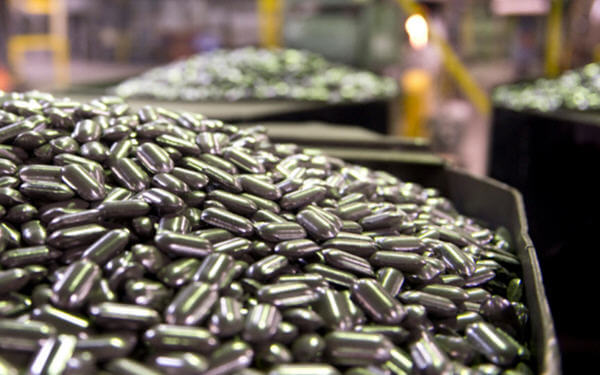
Nickel is adding shine to the otherwise lacklustre 2019 industrial metals complex, as expectations of booming demand from electric vehicles and renewed supply worries rev prices to a one-year high. Nickel is now up 37% since the start of the year, reaching $14,665 per tonne on Thursday in London and jumping 4% in Shanghai to the equivalent of $16,690. Open interest in Chinese nickel futures is up by half in a fortnight and trading volumes have surged – indicating that the price spike is likely the result of speculation more than fundamentals. Miners of the devil’s copper are used to wild swings in price. From the lows mid-2017 below $9,000 a tonne to around this time last year, the metal gained 79%, only to slump by nearly a third to its opening levels of 2019. And who can forget that in March 2007, nickel peaked at $51,780 per tonne.
The electric vehicle (EV) narrative is an exciting one for the metal, but it is still early days. Very early days. Last year, only around 6% of nickel ended up in EV batteries. 70% of supply goes into making stainless steel. That said the outlook is certainly rosy. Battery metals tracker Adamas Intelligence says electric vehicle manufacturers deployed 57% more nickel in passenger EV batteries in May this year, compared to 2018. The deployment of nickel also outpaced the growth of the EV market overall. In May this year, total passenger EV battery capacity deployed globally was 48% higher year-on-year, according to Adamas data. Nickel’s inroads is mainly due to shifting chemistries of nickel-cobalt-manganese (NCM) battery cathodes. First generation NCM111 batteries had a chemical composition of 1 part nickel, 1 part cobalt and 1 part manganese, but the industry is shifting towards an 811 mix. Roughly speaking NCM 811 batteries for light passenger EVs require more than 50 kilograms of nickel. Andrew Cosgrove, senior mining and metals analyst for Bloomberg Intelligence at a recent conference predicted that nickel demand in batteries could outpace that of stainless steel in absolute terms, adding as much as 900,000 additional tonnes per year by 2030. That compares to current annual nickel production of less than 2.5m tonnes.
China’s nickel pig iron production fed from Indonesian and Philippine mines dominate the global industry, and despite the economic slowdown in China, which imports some 50% of the world’s nickel, stainless steel production is growing rapidly. Nickel also jumped this week due the mooted reinstatement of a ban on ore exports from Indonesia from 2022 onwards. When Jakarta enforced the ban to encourage the building of domestic smelters from 2014 to 2016 the price gained initially, but Chinese NPI producers were able to switch to Philippine miners in a relatively short time, so it’s unclear the impact of export restrictions would be this time around. NPI contains only 8–12% nickel and less than half of the total nickel output is so-called Class 1 product, which is suitable for conversion into nickel sulphate used in battery manufacture. Class 1 nickel powder for sulphate production enjoys a large premium over LME prices, but for miners to switch to battery grade material requires huge investments to upgrade refining and processing facilities. But confidence in future demand is such that BHP decided last year to hold onto Nickel West after many attempts to offload it, and is now spending hundreds of millions of dollars switching its Australian operations to battery-grade production. Source: Mining.com